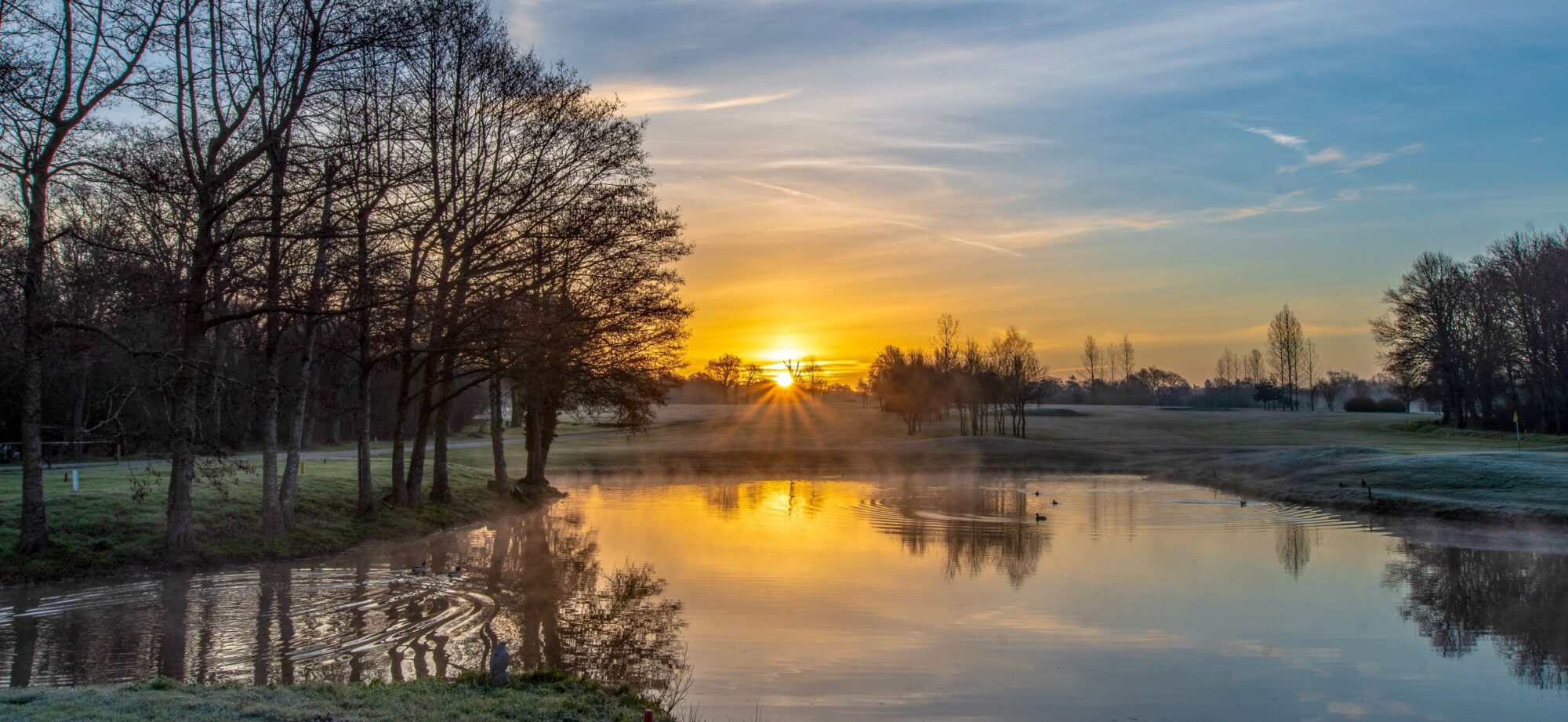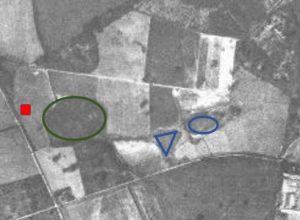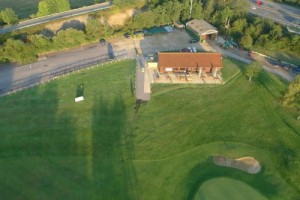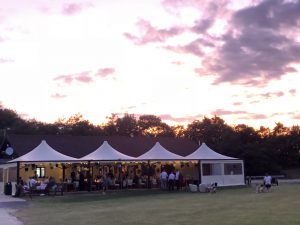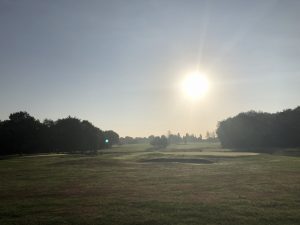1086
- Records of this land, date back to the Doomsday book in 1086. Early spellings of it were Pyllingeber (1238) and Pullingber (c. 1260).
- Edith, the wife of Edward the Confessor, owned the land in Anglo-Saxon times.
- King William kept the land for himself following the Norman Conquest.
Victorian golf course
- During the Victorian era (1837-1901) there was a 9 hole golf course on the land.
World War 1
- At this time the land would have been dug up for crop farming.
- We have circled the large woods and lakes for a reference point and the clubhouse’s location is in red
- You can still make out the tree lines and some of the roads as they are today.
- The woods were originally part of Windsor Great Park.
1989
- The local council agree for the land to be turned back into a golf course.
1990
- Martin Hawtree is given the job of reinstating the course and we think you’ll agree that he did a great job. Sunningdale, Royal Birkdale, Ballybunion and Trump International are some of the other courses that Mr Hawtree had a hand in desgining/ redesigning.
1996
- The M4, built in 1963, runs alongside the course
- This picture shows the newly built Par 3 course in the lower half of the picture
- A portacabin was used as the clubhouse with a separate portacabin for the toilets. In 2004 these were replaced by the present day clubhouse – which is a far more comfortable 19th hole.
23rd May 2016
- Mizuno wanted to show a tour pro playing a course that anyone could play so quietly arranged for Luke Donald to play 9 holes with Mark Crossfield in the week of the European tour event at Wentworth. In challenging, windy conditions he scored level par playing from a mixture of front and back 9 white tees.
Present Day
- Billingbear is now the beautifully kept, established course we know and love.
- Come and play one of the best kept courses around or if you don’t play golf, enjoy our food and drink while taking in the view up the course.
Billingbear House
The land that Billingbear Park Golf Course is on, was originally part of the land of Billingbear 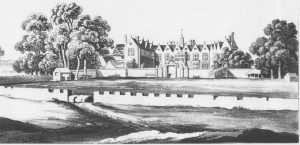 House.
House.
Billingbear House, Berkshire, pictured here in 1669.
(1821 engraving derived from a 17th-century manuscript illustration).
Originally owned by the Bishop of Winchester, the land was given to Sir Henry Neville (father of politician and diplomat, Sir Henry Neville) in 1549 by King Edward VI. He finally took possession in 1567 and began construction of a Tudor mansion.
With the identification in 2005 of the younger Sir Henry Neville as a candidate for the authorship of the Shakespearean plays and sonnets, it is conceivable that some of those works might have been composed at Billingbear. It has been noted that the play The Merry Wives of Windsor displays a knowledge of local towns, a Windsor inn, and a local tale called Herne the Hunter.
When the house was visited by Cosimo III de’ Medici, Grand Duke of Tuscany and Lorenzo Magalotti in 1669, their host was Colonel John Neville. A member of the duke’s retinue painted a view of the house during the two-day stay, which is one of various images to be found in an illustrated manuscript in the Laurentian Library, Florence. An English translation of this manuscript was published in London in 1821; Indian ink copies of the original 17th-century paintings, by Thomas Hosmer Shepherd, were reproduced as scaled-down engravings for inclusion in this publication.
The house stood until 1924, when it was destroyed by fire, and the shell then torn down. The surviving architectural features were used to restore the dilapidated Bulmershe Court, also in Berkshire, in 1925. One room of Billingbear House was transported to the United States in the early 20th century and survives today at Pace College in Manhattan, near the New York City Hall. It is reputedly haunted.
